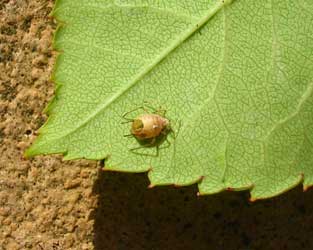Though they have a reputation for hardiness, phalaenopsis orchids are not immune to damage from insect life. Aphids, in particular, are tenacious “sucking” orchid pests that attach themselves to the underside of the leaves, feeding on the plant sap that contains valuable nutrients. They can multiply quickly on buds and new foliage.
 If left unattended, a phalaenopsis that hosts such orchid pests as aphids can develop yellowed, curled leaves. And beyond the cosmetic damage, aphids are carriers of viruses that can permanently affect your orchid’s health.
If left unattended, a phalaenopsis that hosts such orchid pests as aphids can develop yellowed, curled leaves. And beyond the cosmetic damage, aphids are carriers of viruses that can permanently affect your orchid’s health.
To protect your plant from orchid pests, perform regular inspections, especially on the leaves’ undersides. Should you spot an aphid—recognizable by its pear-shaped body—begin a treatment with insecticidal soap and a water spray to knock them off the leaves. If the aphid infestation is relatively new, the soap and water should take care of the problem.
If you prefer a more natural solution, you have options:
Whatever method you choose to control orchid pests like aphids, test your solution on a small portion of the plant first to make sure the phalaenopsis orchid is not overly sensitive to the compound.
Finally, be aware that you must apply the treatment consistently at seven-day intervals to ensure that you kill off any successive generations of aphids that may be burrowing inside your plant.
For more help caring for your plants, check out our Orchid Care Videos here.
Photo Credit: Nick Dimmock

Copyright Just Add Ice® Orchids 2023